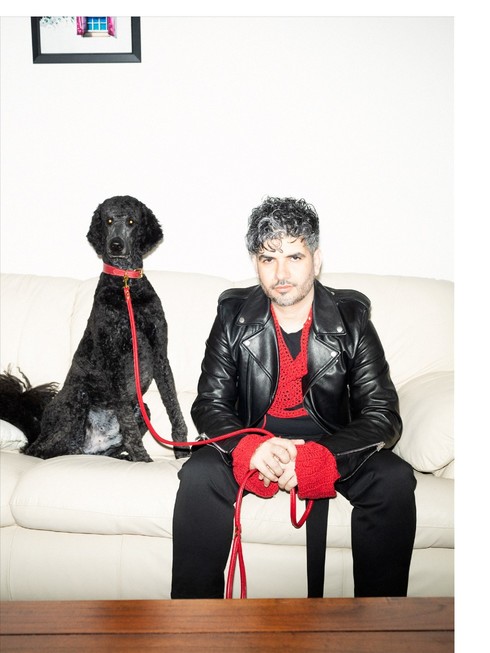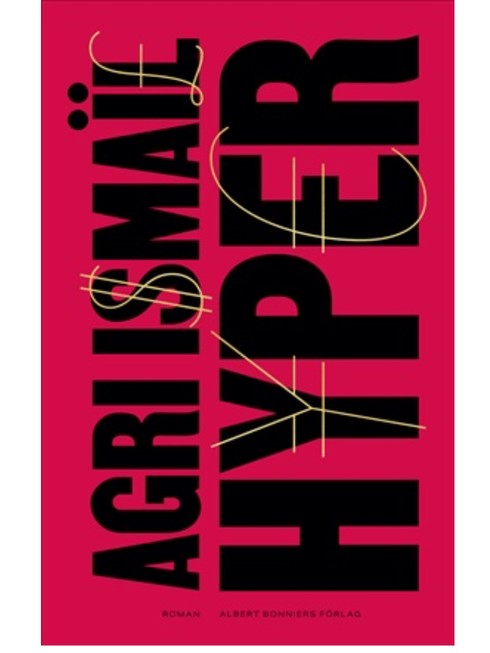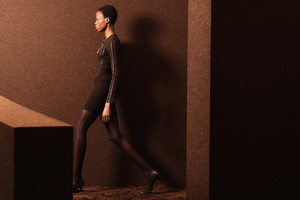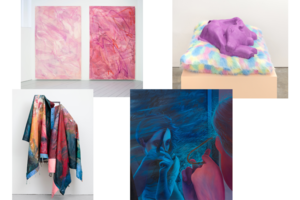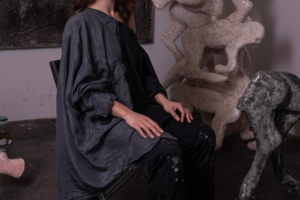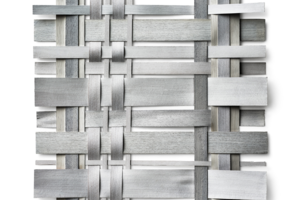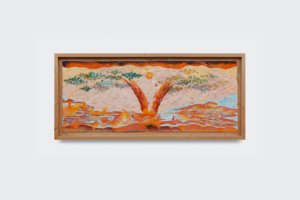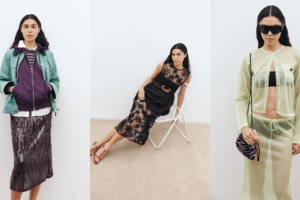Pluto: An Interview with Agri Ismaïl
Written by Ulrika LindqvistHyper, the debut novel by Agri Ismaïl, a Swedish-Kurdish lawyer, was released in January 2024 to critical acclaim. Released both in Swedish and English, the novel tells the story of a Kurdish family unravelling in their pursuit of something greater. Set against the backdrop of the 2008 financial crisis, the novel explores the themes of money, work, and the imbalance between them and love and family. The author’s experiences in cities like Dubai, London, and Iraqi Kurdistan served as inspiration.
We spoke with Agri about the decade-long journey of writing Hyper, the connection between fashion and money, and the sources of his creative inspiration.
Ulrika Lindqvist: How did it feel to finally release Hyper after years of work, and how did the positive reception impact you?
Agri Ismaïl: I feel writers know, intellectually, that publishing takes a very long time, but emotionally it’s still overwhelming: the process of finding an agent, working on submissions, pausing everything due to a global pandemic, submitting again, then waiting, then getting an offer, then revising, and waiting some more does at times feel like an unending Sisyphean endeavour. And then, just as you feel resigned that you will forever live in this odd limbo the book comes out which for me meant an onslaught of reviews on day one. So, yeah, publishing somewhat feels like the inverse of that line about bankruptcies in The Sun Also Rises: it happens “gradually and then suddenly.”
UL: What was the inspiration behind Hyper? Were there any particular events or ideas that inspired you to write it?
AI: I was in corporate finance in London in 2008, and started thinking about a novel about money that would take place at work and have as little time as possible left over for love, relationships, and family. A novel that mirrored the way life felt at the time. Moving to Dubai and visiting my now-wife in New York made me see the crisis as some sort of virus that travelled across the world; the challenge was then to devise a plot and characters that would allow me to tell the story of capital.
UL: I read that it took 10 years to write Hyper, did the story and form change during those years? Is the story you published the story you started writing?
AI: The first few years were just me trying to figure out a plot, but once I did that and had a first completed draft I think the manuscript was quite similar to the result. The ending was changed four times while editing, but we still wound up with the initial ending I wrote. That first manuscript was quite lopsided though: the London part was about 200 pages longer and the New York section was much shorter, a lot of the editing work was aimed at finding a good balance.
UL: A friend who grew up in Dubai felt Hyper portrayed the city with striking accuracy. Did you feel a responsibility to represent Iraq, London, New York, and Dubai truthfully, and how did you approach depicting these places?
AI: It always makes me happy to hear that, because yes the cities are vital to the sense of hyper-realism that I wanted to impart. My UK copy editor was a godsend, she would find the smallest anachronisms — a London ad that couldn’t have been up at the same time a particular film was showing at the cinema for instance — which helped tremendously. If that sense of verisimilitude wasn’t tangible in terms of time and place, the book could not have worked.
UL: Hyper was released in Swedish and English simultaneously, did you write them parallel or did you start in one of the languages? What were the challenges of writing or translating between two languages?
AI: The first draft was in English — at the time I started writing I was living in Dubai and had no real plan to move back to Sweden. But then I did move back and we actually ended up signing with the Swedish publisher virtually at the same time as the UK publisher, so the editing process was done more or less in parallel between the two languages which is madness, definitely not something I’d recommend. The difficulty with the Swedish version was primarily the fact that the characters are all in English-speaking countries, and so I had to find a language that reflected the artificiality of having Swedish dialogue in a London boardroom. Otherwise, it was a give-and-take: Swedish blesses you with lots of interesting compound words, and English blesses you with a variety of sentence structures.
UL: Do you plan to release your coming works in both languages as well?
AI: The next one definitely: since I decided this before I started writing I have the possibility to build in some structural changes that make each version “unique”.
UL: In Hyper you write about money, and money and luxury are often connected to fashion. Your character Siver finds herself working in a luxury fashion store, what was your inspiration for placing her in that environment?
AI: It was mainly a way to have one of the sections be quite tactile in its relationship to money. As opposed to the more abstract capitalism in London and New York, Dubai got to represent a more classic economy: goods bought and sold for money (Dubai remained at the time a very cash-based society). So it made sense to have her in the designer retail world. Fashion is interesting to me because of all the art forms it’s the one that makes its connection to capital the most explicit. You can’t not think about money in relation to fashion. And so in Hyper, this is taken to its cynical extreme, clothes are only ever status symbols, they have no meaning to the characters beyond what they communicate. Siver wears very traditional brands, the big French houses, because these are the brands that are understood by her peers, she’s not walking around in Alexander McQueen or Ann Demeulemeester or anything like that.
UL: Are there any specific novels or authors that have deeply influenced your writing style or themes in Hyper?
AI: The overarching structure was very much inspired by American systems novels, DeLillo, Pynchon, Gaddis… that sort of thing. And Doris Lessing’s The Golden Notebook was instrumental in the way I could see a novel about the disillusionments and failures of the political left. But then I wanted each part to have its own distinct voice, a way to make the siblings feel even more separated from one another, so London is very much the London of hysterical realism, it’s all Zadie Smith and David Foster Wallace, that kind of loud high-speed narration with overwhelming minutiae. For Dubai I used a lot of autofiction, Kate Zambreno, Suzanne Scanlon, and Sheila Heti (Siver’s section was initially much more fragmented, but its indebtedness to this form of autofiction was lost in the many edits over the years) and New York is intended to sound like the internet, or a particular voice that was prevalent on the internet in the early 2010s.
UL: Please tell us a bit about your creative process, when do you do your best writing?
AI: A perfect writing day goes like this: write from 9 to 12, walk the dog to clear my head, then edit for an hour or two after lunch. 99% of writing days are not like this, rather it’s chaotic notes jotted down in notebooks between twenty different things, trying to meet deadlines while a toddler hopped up on juice boxes insists I fix a toy he himself has smashed into several tiny pieces.
UL: What’s next for you as a writer? Are there any new projects or ideas you’re excited to explore?
AI: Just today we sent an issue of the Swedish journal Glänta that I’ve guest-edited off to print, which I’m very happy about. The next book project is about surveillance and takes place in Iraq after the 2003 war. I’m hoping this one doesn’t take another ten years.

